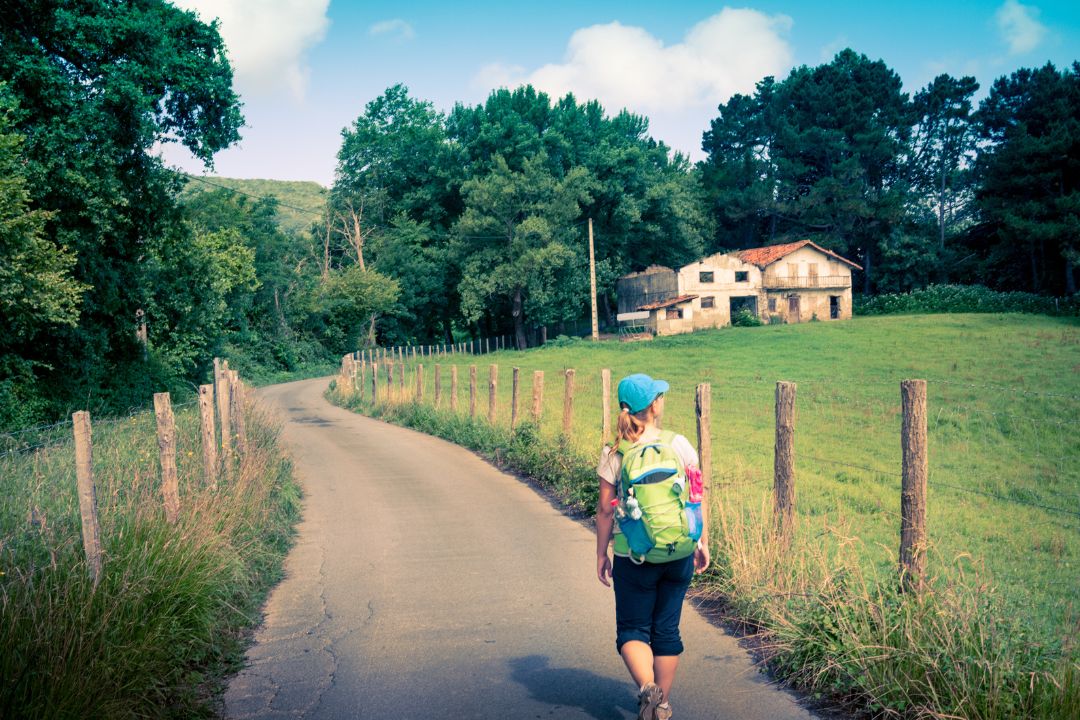This article may contain links to products and services we use and recommend. We may receive compensation when you click on links to those products. For more information, see our Disclosure Policy.
More and more people walk the Camino de Santiago to the tomb of St James in the Cathedral of Santiago de Compostela in Spain every year. Movies like The Way, Looking for Infinity, and I’ll Push You have contributed significantly to increasing the Camino’s popularity among the world’s prominent pilgrimages. And you certainly don’t have to be religious to benefit from the experience.
No matter what route, most pilgrims walk around 25 kilometres/15.5 miles each day. But what if you don’t want to walk those distances, or have an injury or are older and can’t? That question bugged us before our first Camino, and we’ve got good news: You can walk the Camino at your own pace, but you need to prepare a little differently. In today’s article, we share our experience of completing the Camino Portugués/Portuguese Way, averaging around 11 km (7 miles) of walking per day. We even share our itinerary, which includes all stages and accommodations en route.
So, how can you walk the Camino Portugués (or any other Camino route) at a more leisurely pace with shorter distances each day?
Consider your needs and be prepared to make adjustments
We are generally fit and healthy. However, due to a running accident, Paul had spinal surgery only 3 1/2 months before our first Camino. He was still recovering during our Camino. So, we decided to make the following adjustments:
- to choose a less strenuous Camino route,
- to walk shorter distances each day, and
- for me to carry the majority of our stuff.
We reduced our carry-on travel packs to a minimum and sent Paul’s travel pack (with anything we didn’t need) from our starting point to Santiago de Compostela. I walked with my usual travel pack, which weighed 9 kg (20 lbs), about the same weight I typically carry. Paul walked with our usual daypack, carrying a few personal items, snacks and our water bottles (weighing 3 kg/6.5 lbs).
Tip #1: Don’t feel pressured by what others do. It’s YOUR Camino. Listen to your body.
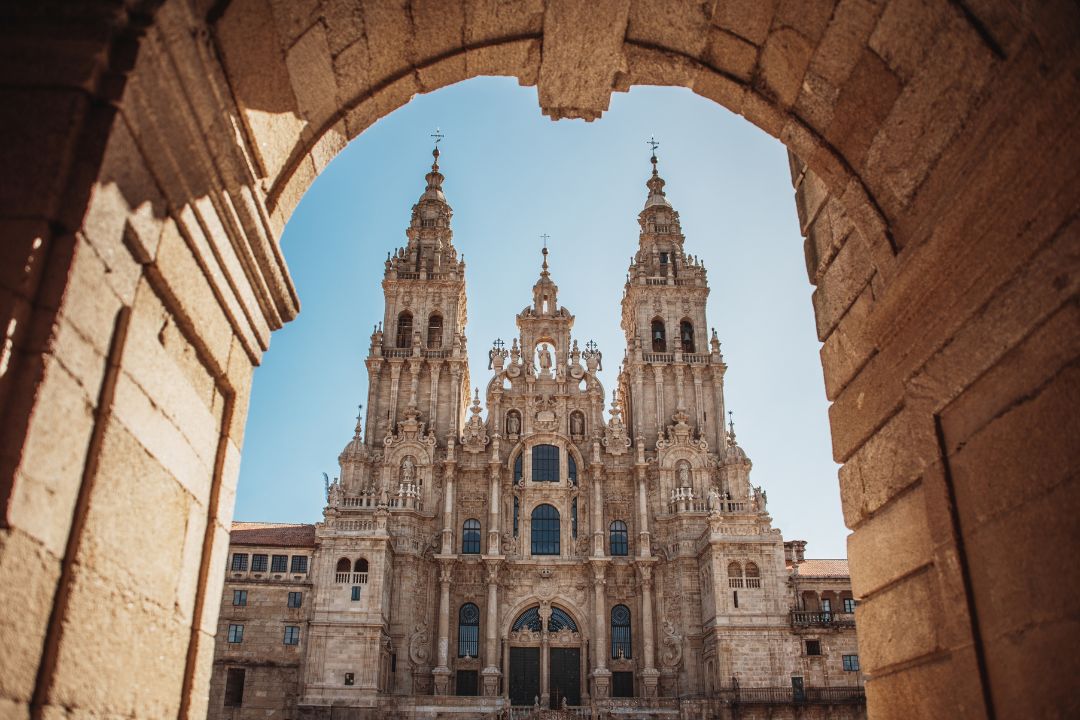
How many people walk the Portuguese Camino each year?
In 2024, the Pilgrim’s Office in Santiago de Compostela registered almost 499,228 pilgrims. 170,251 (about 34%) of them chose to walk the Camino Portuguese (the central and coastal routes). This makes it the second most popular Camino after the Camino Francés (which over 47% of pilgrims chose).
Where do most people start the Camino Portugués?
34% of all pilgrims on the Camino Portugués (de la Costa) commenced their journey on the Portuguese/Spanish border – in either Valença/Tui (Camino Portugués Central) or Caminha/A Guarda (Camino Portugués de la Costa). This is closely followed (at 29%) by those who started in Porto. Only 2.5% of pilgrims commenced their Camino in Lisbon.
Choose a route and distance according to your liking and ability
We decided to combine the various routes that are considered part of the Portuguese Camino, walking from Caminha to Santiago de Compostela via the
- Camino de la Costa (Caminha to Redondela);
- Camino Central (Redondela to Pontevedra);
- Variante Espiritual (Pontevedra to Padrón); and
- Camino Central (Padrón to Santiago de Compostela).
Why did we choose this particular route? We were concerned that the distance from Porto would be too far for Paul so soon after surgery – we would have had to walk 15-20 kilometres every day. On the other hand, we wanted to start in Portugal and experience different routes.
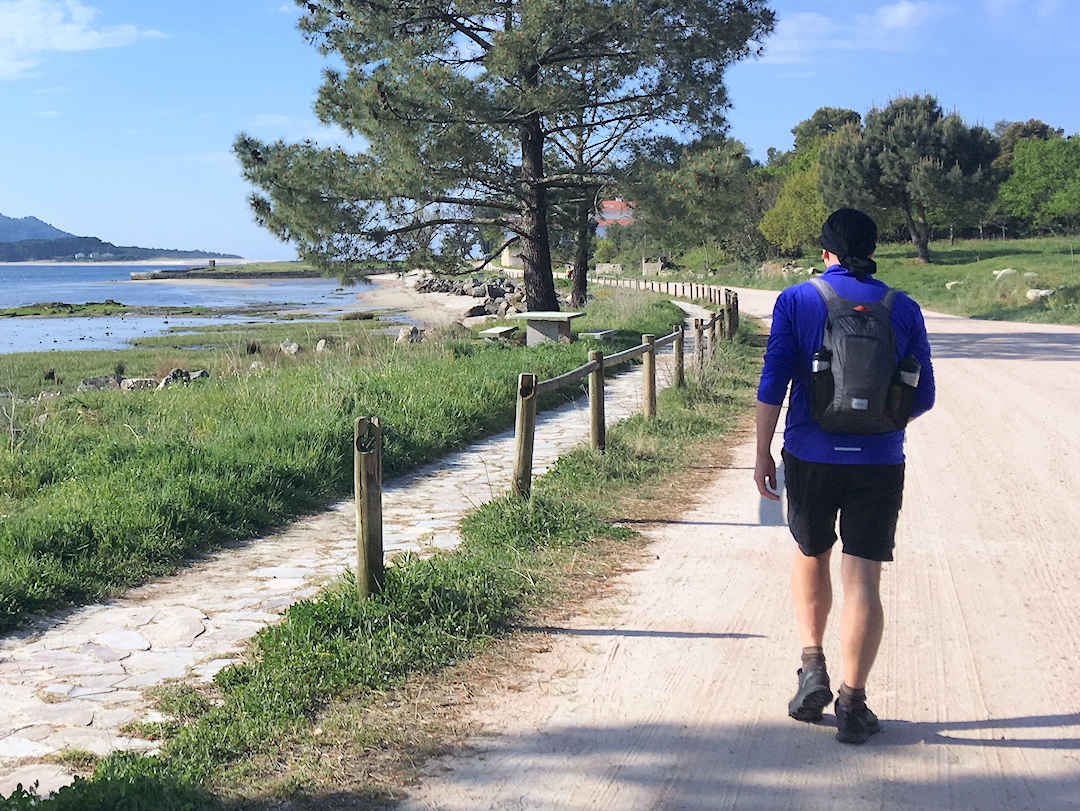
Whatever your reason, you don't have to walk 25km per day on your Camino
Map of Accommodation, Points of Interest, Eateries and Transport
Below is a map of the recommended accommodations, points of interest, eateries, and transport terminals or stops mentioned in this article.
In the end, we walked 183 km (114 miles) over 18 days, including a rest day in Combarro on the Variante Espiritual, averaging about 10.2 km (6.4 miles) per day. Interested in replicating our itinerary? Read on or skip to the main content.
Tip #2: While challenging yourself (at least a little) is part of the whole Camino experience, choose a distance that is achievable and a route that matches your abilities.
Around the world in 80+ travel movies
Looking for travel inspiration? Why not turn to the big screen? Movies can transport us to different places, spark our wanderlust and make us dream of new adventures. And with 80+ films to choose from, covering classics and hidden gems worldwide, you will be planning your next adventure in no time.
Manage your accommodation expectations and prepare as needed
How easy is it to find accommodation on the Camino, and what can I expect to find? This is likely among the most frequently asked questions in Facebook Camino Groups and Camino Forums.
If you walk in the Spring (March/April) or Autumn (October/November), it’s easy, and you generally don’t need to book ahead (except for some small and very popular albergues, such as Casa Fernanda on the Camino Portugués Central). The accommodations we stayed in (in April) were usually only 25 to 30 per cent full. Once, we even had a 16-bed albergue all to ourselves.
Some accommodations may require pre-booking from May to September. Municipal albergues remain first-come, first-served, though – even during the busy season (more on that below). If you want to walk the Camino in Winter (December to February), be aware that some accommodations will be closed.

On the Camino, it's not always 'you get what you pay for': Two dorm beds might cost as much as a double room with your own bathroom
What accommodation can I find along the Camino?
Municipal Albergues
Municipal albergues, as the name indicates, are owned and run by the municipalities you travel through. Local volunteers often staff them. Facilities tend to be (very) basic. However, the price of around EUR10 per person per night reflects this. Municipal albergues cannot be pre-booked. Bring a sleeping bag and liner if you plan to stay (only) in municipal albergues. Not all provide blankets and/or bed linen. Or if they do, they may not be sufficient to keep you warm.
Private Albergues
Private albergues are licensed as such and must follow the same rules that apply to municipal albergues regarding eligibility to stay and lock-up times. The facilities tend to be (significantly) better than those in municipal albergues. However, they also cost twice or three times as much (EUR 15-25 per person per night). If you stay (mostly) in private albergues, you won’t need to bring a sleeping bag (just a liner). They all provide blankets and bed linen (some even towels).
Guest Houses/Hotels
You will find guesthouses and hotels along the Camino. Many restaurants (that offer pilgrims’ menus) also have a few guest rooms. Many rural lodges do not advertise their services on websites like Booking.com. You need to knock on the door and ask. Most of them offer double or twin beds. Some also have family rooms. Rates for a basic, clean double or twin room with its own bathroom start at EUR 35 per room per night (in low season). Breakfast is usually not included.
Some people swear by the John Brierley guidebooks to help them plan their routes and accommodations. We downloaded the Wise Pilgrim Camino Portugués app (available on Google Play and the App Store) and supplemented it with Booking.com to find accommodations not mentioned in the app.
Tip #3: Once you’ve decided what average distance per day you can or want to walk, check the route you’d like to do and the lodging options along the way. Then adjust your daily stages according to the options available.
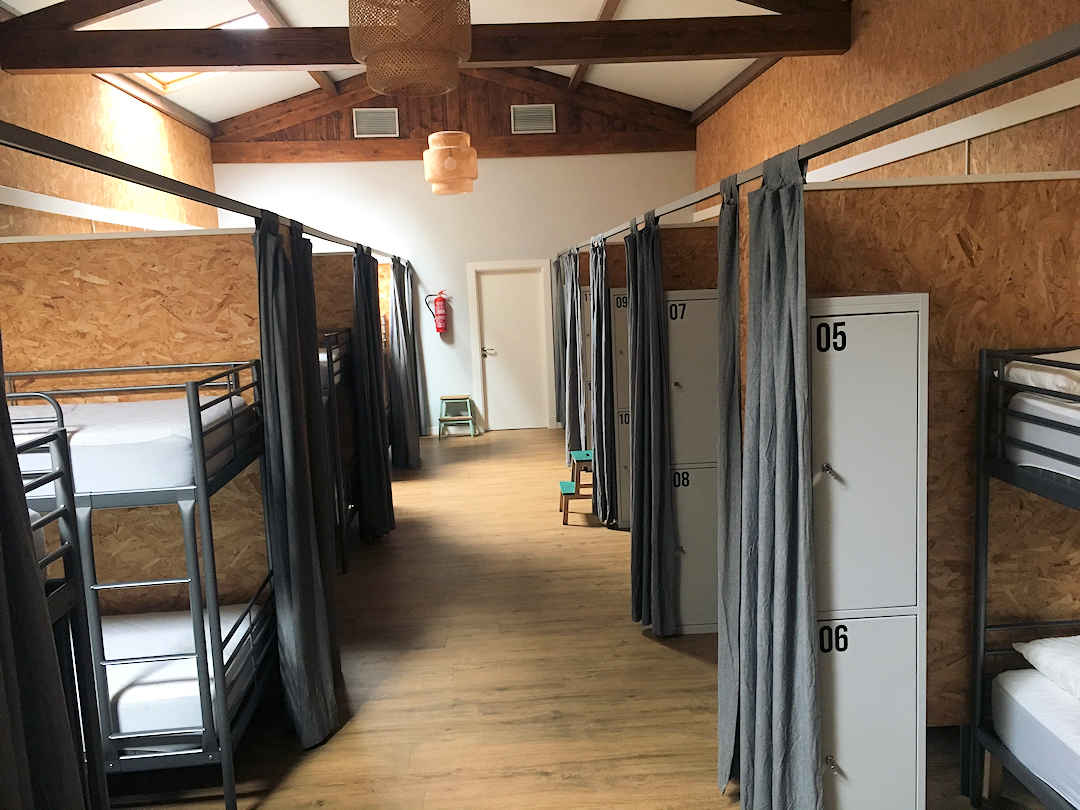
Private albergues, like this one in Redondela, have better facilities but are also double or triple the price of municipal albergues
More Camino de Santiago articles
- Are you planning your first Camino de Santiago and have a gazillion questions about what to expect? Have a look at the lessons we learnt on our first Camino.
- You'd love to do the Camino but can't or don't want to average 30km/20miles a day? Learn here how to tailor the Camino Portugués to your needs.
- Would you like to walk the Camino de Santiago and wonder how much to budget? Check out how much it cost us to walk the Camino Portugués.
- You completed your Camino. Now what? Here are five tips to help you digest your experience and gently transition into life after your Camino.
Our 3-Week Portuguese Camino Itinerary
Suppose you have three weeks available and are happy to walk an average of 11 km (7 miles) per day. In that case, our itinerary provides 17 days of walking (along the Coastal, Central, and Spiritual routes). Four spare days, which you may want to use as rest day/s en route (there are plenty of places that warrant further exploration) or once you’ve reached Santiago de Compostela.
Tip #4: Make sure you leave some time to explore Baiona [Tourist Office], Redondela [Tourist Office], Pontevedra [Tourist Office], Combarro [Tourist Office], Padrón [Tourist Office] and of course, Santiago de Compostela.
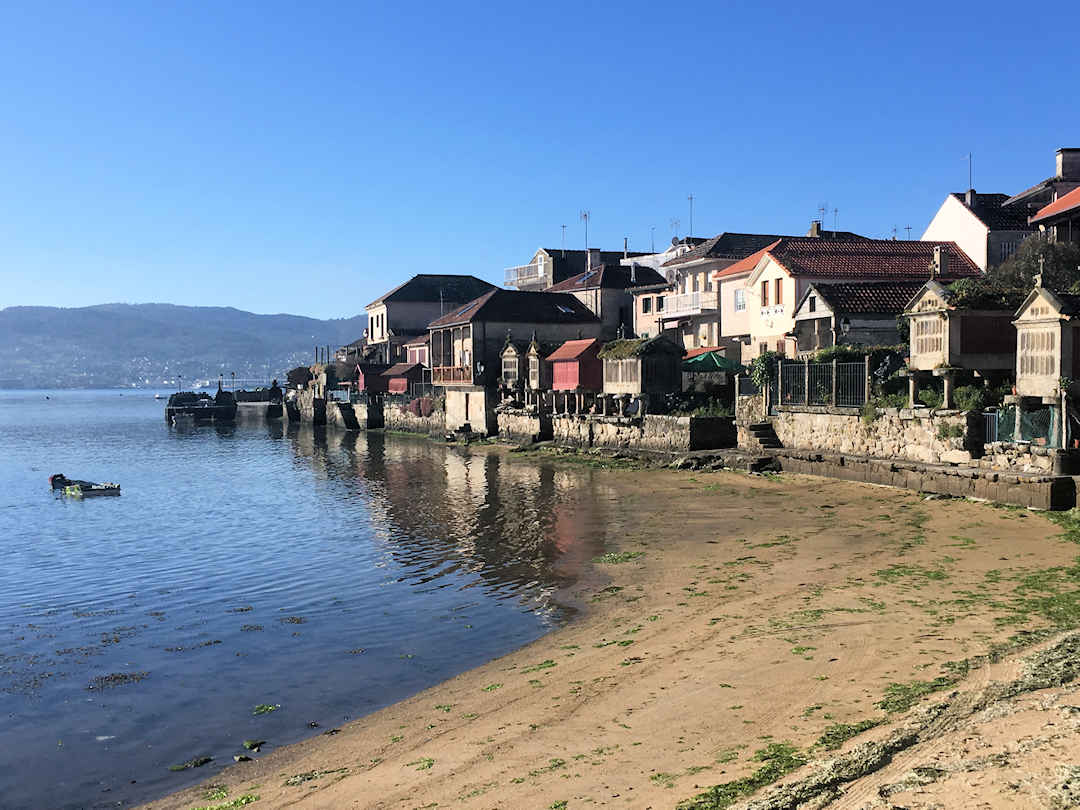
Make sure you explore the towns and villages along the way, such as Combarro on the Variante Espiritual
We slept in various accommodations, from dorm beds in municipal and private albergues to bedrooms with our own bathrooms in guest houses and hotels (including a monastery and a 4-star hotel). Sometimes, a room with a bathroom costs us the same as two dorm beds. In some areas, guesthouses or hotels were the only options.
As prices have increased since we did the Camino Portugués, the below has been updated to reflect 2025 low-season prices:
| Day | Name | Stage | Type | Distance in kilometres | EUR Cost (for 2 people) |
|---|---|---|---|---|---|
| 0 | Arca Nova Guesthouse | Porto - Caminha | Ensuite double | by train | 55.00 |
| 1 | Albergue de Peregrinos Municipal A Guarda | Caminha - A Guarda | Bunk beds in dorm | 7.9 | 20.00 |
| 2 | Albergue da Estrela | A Guarda - Viladesuso | Bunk beds in dorm | 17.0 | 72.00 |
| 3 | Hostel Albergue Baionamar | Viladesuso - Baiona | Bunk beds in dorm | 14.3 | 38.00 |
| 4 | El Retiro | Baiona - Nigrán | Ensuite double | 9.4 | 35.00 |
| 5 | Hesperia Vigo | Nigrán - Castrelos Park | Ensuite double | 15.8 | 50.00 |
| 6 | Hotel Arsus | Castrelos Park - Vigo | Ensuite double | 5.5 | 43.00 |
| 7 | Albergue Santiago de Vilavella | Vigo - Redondela | Bunk beds in dorm | 15.0 | 34.00 |
| 8 | Hostel Albergue O Meson | Redondela - Puentesampayo | Bunk beds in dorm | 9.3 | 34.00 |
| 9 | Albergue Nacama | Puentesampayo - Pontevedra | Bunk beds in dorm | 11.8 | 44.00 |
| 10 | Hotel Xeito (we stayed 2 nights) | Pontevedra - Combarro | Ensuite double | 11.5 | 55.00 |
| 11 | Mosteiro de Santa María da Armenteira | Combarro - Armenteira | Ensuite twin | 10.6 | 80.00 |
| 12 | Hostal O Legado de Ramira | Armenteira - Ponte Arnelas | Ensuite double | 13.6 | 63.00 |
| 13 | Albergue A Salazon | Ponte Arnelas - Vilanova de Arousa | Bunk beds in dorm | 11.9 | 34.00 |
| 14 | Albergue Corredoiras | Vilanova de Arousa - Padrón | Bunk beds in dorm | 2.9 (plus 26.8 by boat) | 36.00 |
| 15 | Albergue Da Capellania | Padrón - A Escravitude | Bunk beds in dorm | 7.5 | 34.00 |
| 16 | Albergue Peregrinos Milladoiro | A Escravitude - O Milladoiro | Bunk beds in dorm | 11.6 | 36.00 |
| 17 | Albergue Santiago KM-0 | O Milladoiro - Santiago | Bunk beds in dorm | 7.5 | 48.00 |
| Total | 183.1 (excluding boat) | 811.00 |
I hope I have alleviated any concerns you may have had about walking shorter distances each day on your Camino. You don’t have to do what everybody else does. It’s YOUR camino, after all.
By the way, our first Camino got us hooked, and we have since also completed the Kumano Kodo, an ancient spiritual pilgrimage in Japan. If you, too, come back from your Camino wanting more, check out our Kumano Kodo articles.
Bom Caminho / Buen Camino!
Have you done the (Portuguese) Camino, walking less than 25km/day?
Which route did you choose? Why did you walk shorter stages, and what distance did you average? And if you’re still planning your trip, do you have any other questions? Please let me know.
Before you go, if you liked our article and found it helpful, we would appreciate it if you could share it with your friends and family via the Share buttons below. Even better: Leave a short review on Trustpilot or Google, which would help us further build our online reputation as a (trustworthy and helpful) travel and lifestyle blog.

